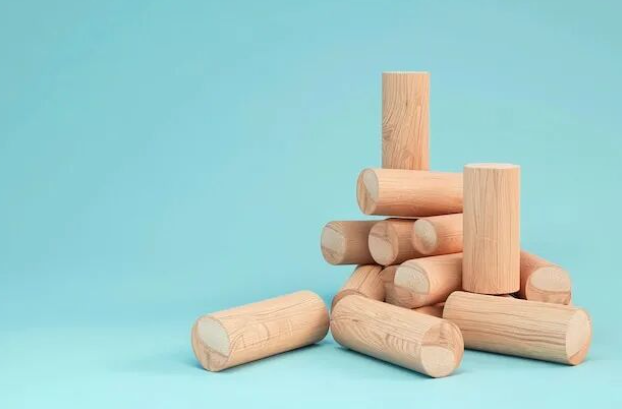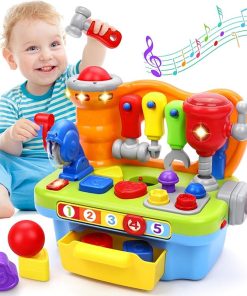Are solid wood toys really better than plastic toys
Recently, I’ve noticed an interesting phenomenon: Moms around me are all enthusiastically recommending wooden toys, and plastic toys seem to have fallen out of favor overnight. As someone who has made countless mistakes while shopping for toys, today I’d like to share my tips for buying wooden toys.

Last year, when I took my child to a friend’s house, I saw a floor full of broken plastic toy pieces. In that moment, I truly understood what “visual pollution” meant. In contrast, the smooth and elegant wooden building blocks at my friend’s place were like a breath of fresh air. Not only did they feel great to the touch, but they were also indestructible. Most importantly, they didn’t emit those harsh electronic sounds! This was probably what’s called a “dimensional reduction strike.”
What moves me the most about wooden toys is their “warmth.” Plastic toys always give off a cold and impersonal feeling, while wooden toys gradually develop a patina over time, leaving behind traces of a child’s growth. My set of building blocks has been used for three years, and now they feel as smooth as jade. Every time I tidy up the toys, it’s like caressing the passage of time.
When I first started buying wooden toys, I also made my fair share of mistakes. The worst was purchasing toys labeled as “wooden” that were actually made of composite boards. After just two months, they started to peel and crack. Later, I learned that genuine wooden toys should display the natural grain of the wood and have a completely different heft.
Another misconception is blindly pursuing “natural wood color.” In fact, toys treated with eco-friendly water-based paints are safer because raw wood may seep resin, which can be unfriendly to children with allergies. Now, I specifically choose brands with FSC certification. Although they’re a bit more expensive, I feel at ease using them.
The most amusing mistake was buying an extremely expensive set of “Montessori teaching aids,” only to find my child using them as darts. Later, I realized a truth: The value of a toy lies not in its price but in how a child plays with it. Now, I first observe my child’s interests and then choose suitable wooden toys.
After countless mistakes, I’ve finally identified several types of wooden toys that stand the test of time. Building blocks top the list. From basic shapes to complex designs, they can be enjoyed for many years. My set of building blocks with gears has kept my child entertained from age 2 to 6 without losing its appeal.
Wooden puzzles are also a strong suit of wooden toys. Compared to cardboard puzzles, wooden puzzles are more resistant to biting and have smoother, safer edges. The world map puzzle I recently bought has become a “team-building project” for the whole family, with even the grandparents joining in.
The most unexpected hit has been wooden kitchen toys. I thought they would quickly lose their charm, but they’ve turned out to be the most frequently used “furniture.” My child cooks for us every day, and those wooden fruits and vegetables are almost developing a patina from being handled so much. Role-playing wooden toys seem to be particularly effective at stimulating a child’s imagination.
After using wooden toys for three years, I’ve discovered several unexpected benefits. The most noticeable is that my child’s concentration has improved, probably because wooden toys lack those flashy sound and light effects, allowing children to become more fully engaged.
Another pleasant surprise is how easy it is to organize them. Plastic toys always end up scattered everywhere, while wooden toys, due to their uniform material, look particularly harmonious when placed together. I now keep the building blocks in a wicker basket, and they’ve even become a decorative item in the living room.
The most heartwarming aspect is that these toys have become heirlooms. When my cousin’s child visited, I gave away a few wooden toys that my child no longer played with much, and they were treated as precious gifts. Just thinking about how these toys might accompany the childhoods of several children makes them feel incredibly worthwhile.
Wooden toys are like the slow art of parenting, requiring time to appreciate their true value. Although they may cost more per unit than plastic toys, when you factor in their lifespan and emotional value, they’re definitely a superb investment. This summer, why not choose a few warm and meaningful wooden toys for your child?

 Musical Toddler Tool Bench Montessori Educational Toys with Sound Lights Effect Engineer Pretend Play Workbench
Musical Toddler Tool Bench Montessori Educational Toys with Sound Lights Effect Engineer Pretend Play Workbench
Children’s oversized drawing board with erasable magnetic writing board
Flying Air-Powered Balloon Toy with Pump-Birthday Gift for Boys and Girls
Children’s wireless Bluetooth MP3 speaker outdoor home party microphone karaoke microphone
Balancing early childhood Wooden Block Stacking Game Tumble Tower Board Game with Building Blocks